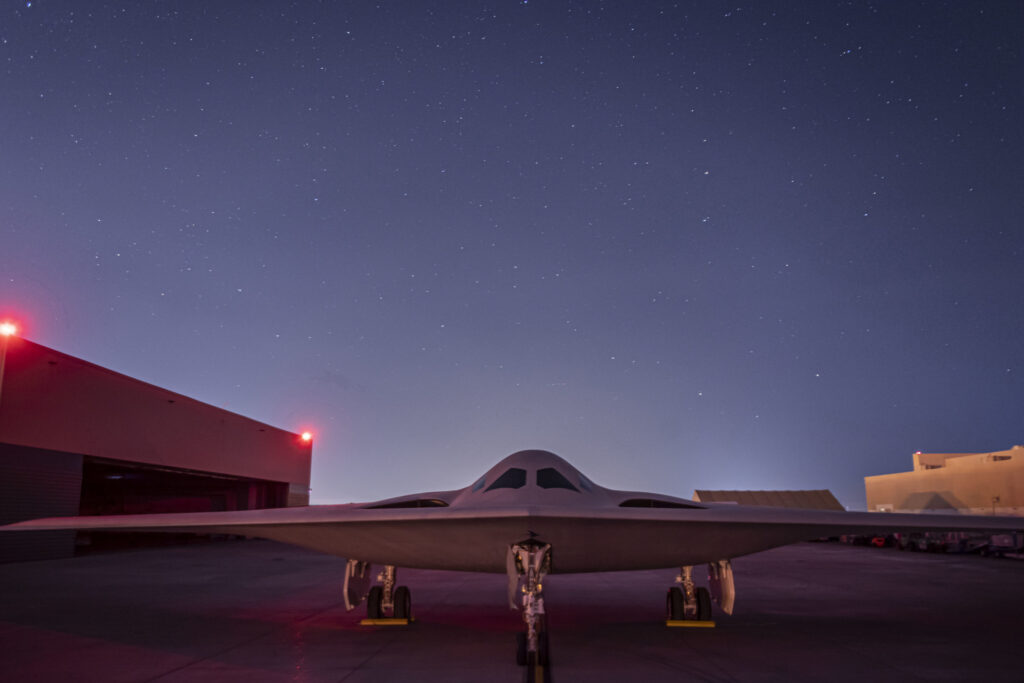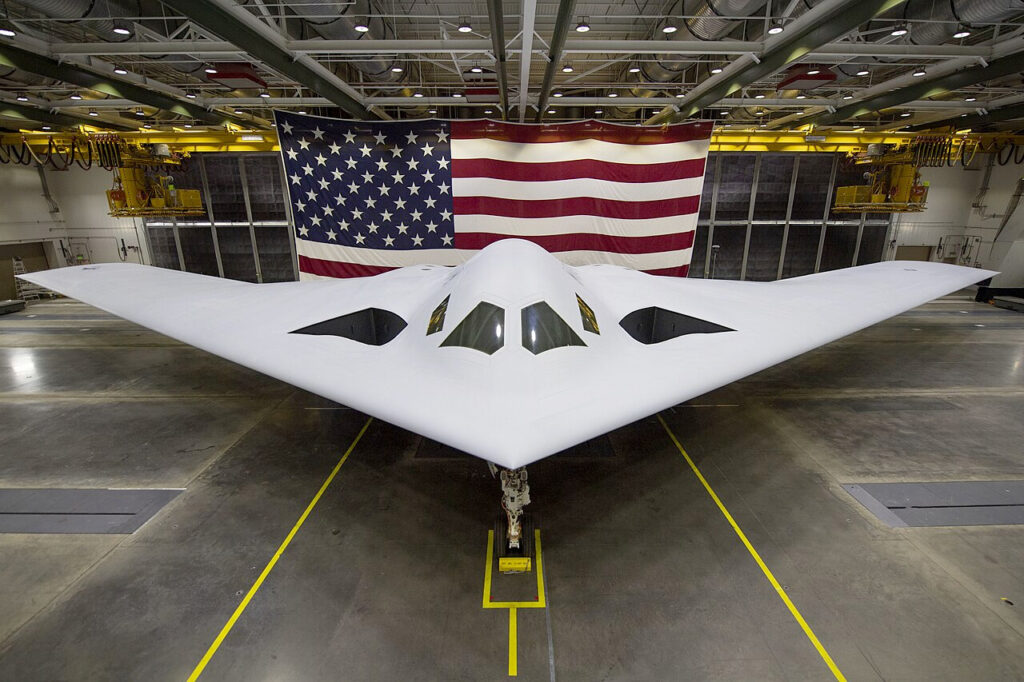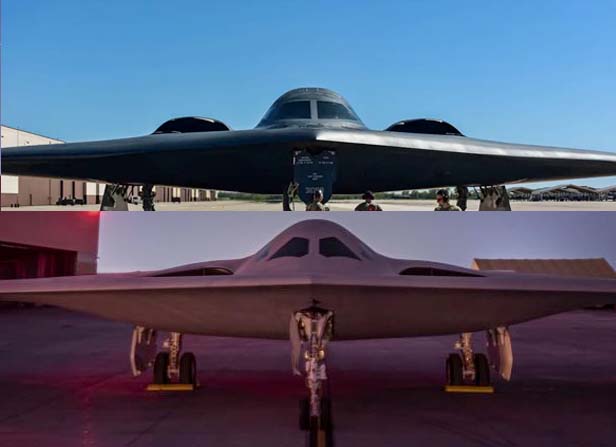ALEX HOLLINGS

America’s new stealth bomber in development, the B-21 Raider, has officially powered up its engines for the first time in preparation for the beginning of test flights later this year.
The news of the power-on milestone came during a second-quarter earnings call with Northrop Grumman executives, along with the revelation that the firm will not be competing to field a design for America’s next stealth fighter currently in development for the Air Force, currently known as the Next Generation Air Dominance (NGAD) program.
During the call, Chief Financial Officer David Keffer explained that the advanced bomber effort remains “on track for first flight this year,” but cautioned that getting there won’t be a sure bet. Getting the B-21 into the sky will depend on the program continuing to mature on schedule, but Northrop’s team seemed optimistic. According to the call, the company expects to secure the first Low Rate Initial Production contract for the Raider shortly after its first flight.

The B-21 program was always expected to be costly. After all, the bomber’s predecessor – Northrop’s B-2 Spirit – was said to have ballooned up to nearly $2 billion per aircraft during its own abbreviated production run. Northrop Grumman has said they’ll be able to deliver the more advanced B-21 for a comparatively small $692 million per bomber, but concerns about inflation have already placed that figure into question.
“We still have the risk factor associated with B-21, as we look at inflationary impact,” Northrop Grumman CEO Kathy Warden explained. “In the quarter we did receive notification that the [Defense Department] has allocated $60 million for B-21 LRIP procurements due to inflationary impact, and we expect that to be awarded later this year. But keep in mind this only applies to the one fiscal year; it’s associated with Fiscal Year 2023. And we continue to work closely with the government on an effort to address the impacts of macro-economic disruption.”

The B-21 Raider is expected to be the most advanced stealth bomber ever to take to the skies when it enters service later this decade. Much like its predecessor, the B-21 will be capable of carrying a variety of nuclear weapons like the B-61 variable-yield nuclear gravity bomb and the Long Range Stand Off (LRSO) nuclear cruise missile. The B-21 will also be equipped to handle a large number of conventional weapons that will allow it to play an active role in combat operations around the world immediately upon entering service.
By incorporating a variety of new materials, sensor technologies, and electronic warfare systems, the B-21 will be able to serve not only as a long-range bomber, but as a very stealthy communications node and even intelligence, surveillance, and reconnaissance (ISR) platform. Eventually, the Raider will even be able to operate autonomously, without a crew onboard.
Perhaps most importantly, the Air Force intends to purchase at least 100 of these advanced new bombers – more than five times the number of B-2s ever produced. This should reduce overall production and operating costs while providing the U.S. Air Force with a significant leap in capability over its current combined bomber fleets of non-stealth B-1Bs and B-52s flying alongside just 19 B-2 Spirits.
No comments:
Post a Comment